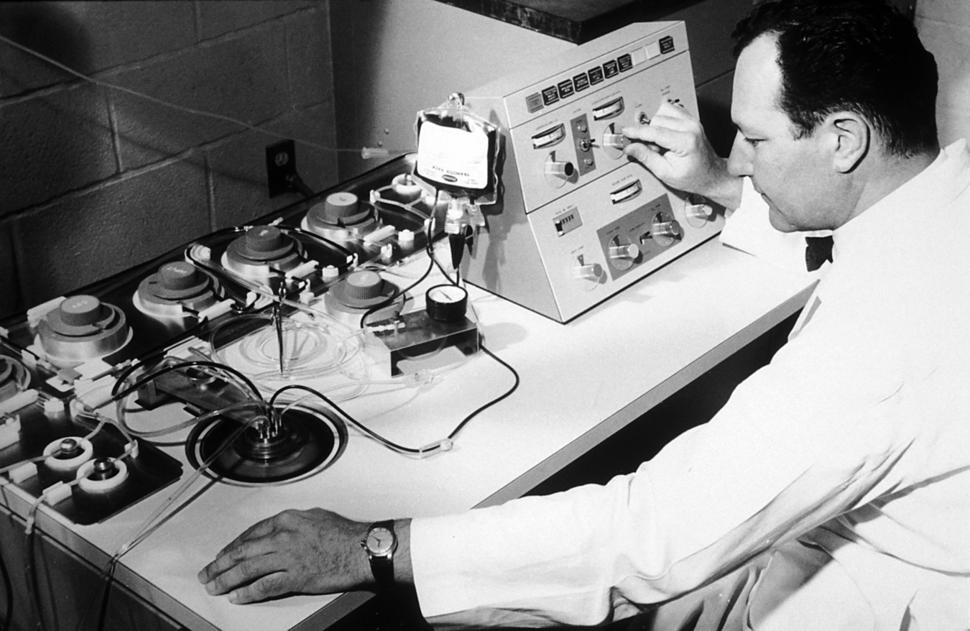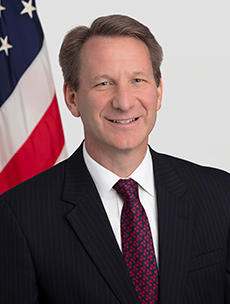Commemorating the Contributions of Cancer Research Greats
, by Norman E. Sharpless, M.D.
There are those moments, those events that make it the ideal time to stop and reflect on the past.
Such is the case with the passing of Dr. Emil Freireich, who died last month at the age of 93 in Houston, his long-time home. Having begun his career in the 1950s at NCI, Dr. Freireich went on to become one of the most accomplished physician–scientists to ever step into a lab or comfort a worried patient.
I never had the opportunity to work with Dr. Freireich. But like so many other cancer researchers, I was influenced by his work. He provides a preeminent example of how our own actions can have an enduring impact on so many others.
Dr. Bruce Chabner, a cancer research luminary (and another NCI alumnus), who was kind enough to provide some thoughts on Dr. Freireich, described him as “formidable” and “brilliant,” a man who often had a smile on his face but wasn’t “afraid to challenge people.”
When describing Dr. Freireich’s accomplishments and legacy, it’s only appropriate to mention another research legend, Dr. Emil "Tom" Frei, who died in 2013.
Many in the cancer community are familiar with the story of the “two Emils,” who worked together at NCI, and later at other institutions, pioneering the approach of giving children with acute lymphoblastic leukemia (ALL) several chemotherapy drugs at the same time.
Over the course of a decade, the combination chemotherapy approach they developed transformed what was for children “a horrible disease—a death sentence,” as Dr. Freireich once described it, into a cancer for which cures became commonplace.
What often gets less attention is that some of their studies testing combination chemotherapy for childhood ALL also heralded the introduction of the cooperative clinical trial in cancer: researchers at different centers all working on the same study, using the same treatments and protocols, in an effort to answer their scientific question more rapidly and with more robust data.
It’s not hard to look at this milestone and see how it laid the groundwork for today’s clinical trials enterprise. For example, NCI’s National Clinical Trials Network includes five large research groups and more than 2,000 clinical sites, and it conducts hundreds of trials at any given time. In many ways, this massive network of cutting-edge science was born from those first group trials of combination chemotherapy that Drs. Freireich and Frei helped to organize.
Of course, Drs. Freireich and Frei made many other contributions.
Dr. Freireich, for instance, partnered with the father of a patient at the NIH Clinical Center who worked at IBM to create the first device to separate out blood components from fresh human blood. He showed that the platelets separated from whole blood could be used to treat a serious complication of blood cancers: hemorrhage.
As Dr. Chabner explained, this advance was “absolutely fundamental to the treatment of lymphomas and leukemias. Kids were dying because of hemorrhage.”
These accomplishments alone would have amounted to stellar scientific careers. But after moving to the University of Texas MD Anderson Cancer Center in 1965, Drs. Freireich and Frei continued their work, directing studies that led to continued improvements in the treatment of blood cancers.
Remembering Dr. John Young
Dr. John L. Young, Jr., a pioneer in the field of cancer surveillance, died on March 11. In the 1960s, Dr. Young helped establish NCI’s Surveillance, Epidemiology and End Results (SEER) Program, work that set the rules and standard operating procedures for the nascent field. He led the SEER Program until retiring from the Public Health Service in the late 1980s.
Dr. Young went on to help establish the Greater California Cancer Registry and the North American Association of Central Cancer Registries before joining Emory University to serve as director of the Atlanta SEER registry.
Dr. Frei left MD Anderson in the early 1970s for the Dana-Farber Cancer Institute. He took the reins as its director not long after, following the passing of the center’s namesake and yet another research icon, Dr. Sidney Farber. In addition to helping construct a world-class cancer research program at Dana-Farber, Dr. Frei continued his own research, including pioneering work on bone marrow transplants to treat cancer.
Especially this year, as we commemorate the 50th anniversary of the National Cancer Act of 1971, it feels only appropriate to reflect on the impact of others in the cancer research community who, although they are no longer with us, made possible so much of what came after that momentous legislation.
That includes Dr. Joe Simone, who also did foundational work on childhood leukemia in his long and distinguished career, beginning at St. Jude Children’s Research Hospital but also at several other NCI-Designated Cancer Centers, where he held leadership posts. Dr. Simone died in January at the age of 85.
Among his many accomplishments, Dr. Simone helped direct—along with Dr. Don Pinkel—some of the landmark clinical trials that allowed the term “cure” to be used in the same sentence as “childhood leukemia.” He also oversaw the creation of one of the first clinics dedicated to the long-term follow-up care of survivors of childhood cancers.
Take Dr. Jane Cooke Wright, a pioneering cancer researcher and physician who broke barriers as an African-American woman in medicine. Beginning in the early 1950s, her work established the efficacy of several different chemotherapy drugs for solid tumors, and she pioneered tailoring treatment based on the side effects patients were experiencing. She was also a founding member of the American Society of Clinical Oncology and held leadership positions in many other research organizations.
And then there is Dr. Jimmie Holland, who in the 1980s essentially created the field of psycho-oncology during her long and storied career at Memorial Sloan Kettering Cancer Center. A tireless advocate for patients, Dr. Holland led efforts to develop validated measures of patients’ quality of life for use in clinical trials and championed research on cancer’s long-term psychological impact on survivors, such as anxiety and depression.
And any discussion of cancer pioneers is incomplete without mentioning Dr. Min Chiu Li, who, while at NCI in the 1950s and 1960s, helped to bring about several paradigm-changing advances in cancer treatment. He was the first clinician to cure a solid tumor with chemotherapy—choriocarcinoma, which forms in the uterus. But his research also provided one of the earliest examples of identifying biomarkers that could predict treatment response and the use of adjuvant therapy to wipe out any disease lurking after initial treatment.
Not only did all of these remarkably intelligent and perseverant researchers help to improve the lives of so many who were sick and in need of care, they also had an immeasurable influence on so many who pursued medicine and research as their career and calling. They shared a commitment to training the next generations of cancer researchers, imparting their knowledge, commitment, and desire to serve in the way they knew best. In so doing, they helped to create and grow a web of excellence that is woven throughout the entire cancer care enterprise in this country and beyond.
It’s daunting to try to capture the impact these amazing scientists had—and there are, of course, many others who I have not mentioned. But for me, during a time of such monumental change and discovery in cancer research and care, it’s worthwhile to think about and appreciate those who laid the foundation for where we stand today.
We’re all the better for what they did, and that should be celebrated and remembered.

